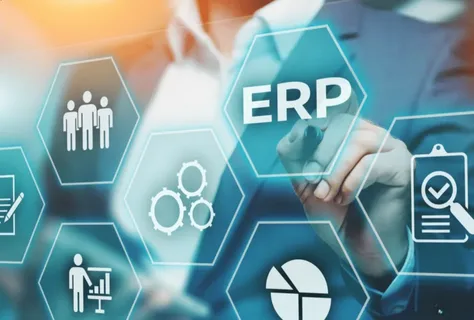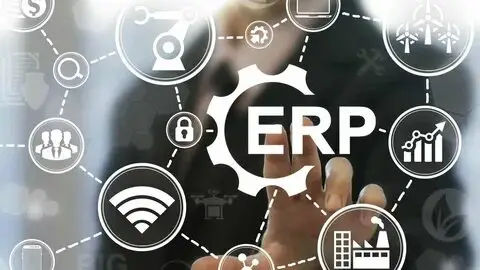Demystifying Enterprise Resource Planning: A Comprehensive Guide
Resource planning can be a daunting task for modern business. With ever-growing efficiency demands, it’s important to understand all the factors involved in subtly balancing employee resources and crafting strategies that lead to success. That’s why we’ve put together this comprehensive guide on enterprise resource planning (ERP), covering everything from what exactly ERP is and its benefits, to which features you should look for when selecting an ERP product and how implementation works—all with the goal of demystifying the process. So if you’re new to ERP or just need a bit of help understanding its complexities, you’ll find all the information you need right here!
What is Enterprise Resource Planning (ERP)?
Enterprise Resource Planning (ERP) is a type of software that organizations use to manage day-to-day business operations such as project management, procurement, supply chain operations, and financial management. At its core, ERP integrates these various functions into one complete system to streamline processes and information across the entire organization. It provides an integrated and continuously updated view of core business processes using common databases maintained by a database management system. ERP systems track business resources—cash, raw materials, production capacity—and the status of business commitments: orders, purchase orders, and payroll. It essentially acts as the central nervous system of a business, connecting all parts of the organization and providing real-time data to help make informed business decisions.

Benefits of ERP for Businesses
The benefits of ERP for businesses are manifold.
- Efficiency: ERP eliminates repetitive processes and significantly reduces the need to manually enter information. The system will also streamline business processes and make it easier and more efficient for companies to collect data.
- Integrated Information: Instead of having data distributed throughout numerous separate databases with an ERP system, all information is located in a single location. Data is also kept consistent and up-to-date.
- Business Intelligence: Some ERP solutions include built-in analytics and reporting tools to help you understand your business operations and performance better.
- Customer Service: It’s easier to provide high-quality customer service using an ERP solution, as employees have access to customers’ information faster.
- Scalability: ERP systems are easily scalable. This means adding new functionality to the system as the business needs change is easy.
Remember, the key to receiving the benefits of an ERP system is to choose the system that fits your business needs, implement it correctly, and train your employees to use it effectively.
Types of ERP Solutions
ERP solutions come in various types, each offering unique features and benefits that cater to different business needs.
- On-Premise ERP: This type of ERP solution is installed on company’s hardware and servers and managed by IT staff. On-Premise ERP provides a high level of control and customization, but it can also involve significant upfront and ongoing costs for hardware, server maintenance, and IT staff.
- Cloud-Based ERP: Cloud-based ERP solutions are hosted on the vendor’s servers and accessed through a web browser. They offer the benefit of lower upfront costs and reduced IT requirements, as the vendor is responsible for updates, server maintenance, and security. These systems are typically more flexible and easier to scale than on-premise solutions.
- Hybrid ERP: Hybrid ERP solutions offer a mix of on-premise and cloud deployment. For instance, a company might choose to keep sensitive financial data on-site while using the cloud for other functions.
- Industry-Specific ERP: Some ERP solutions are designed for specific industries, catering to unique needs and regulatory requirements. For example, manufacturing ERP systems may include features for inventory management and production scheduling, while a healthcare ERP might focus on patient records and compliance with health regulations.
While choosing the right ERP system, it’s crucial to understand your specific business needs and weigh the pros and cons of each solution. After all, an ERP system can be a significant investment, but with the right choice, it can also be a powerful tool to drive business growth.

How to Choose the Best ERP Software for Your Business
Choosing the right ERP software for your business can be a challenging task, especially with a plethora of options available. Here are some steps to ensure you make the best choice:
- Understand Your Business Requirements: Before embarking on the search for ERP software, it’s crucial to understand your business needs. Identify the challenges that you want the ERP system to address and the goals you want it to help you achieve.
- Prioritize Features: Not all ERP systems offer the same features. Make a list of must-have features, nice-to-have features, and features that you do not need.
- Consider the Total Cost of Ownership (TCO): Look beyond the initial cost of the software. Consider other costs like hardware upgrades, implementation, training, maintenance, and upgrades over time.
- Evaluate Vendor Support: Good vendor support is critical for the successful implementation and ongoing use of the ERP system. Consider factors like availability, response time, and whether the vendor offers user training and technical support.
- Look for Customization and Scalability: Ideally, the ERP system should be customizable to fit your business processes and scalable to grow with your business.
- Check Out User Reviews and References: User reviews and references from other businesses in your industry can provide real-world insights into how the ERP system works.
Remember, the choice of ERP software can significantly impact your business operations, so it’s essential to take the time to make an informed decision.
Tips for Implementing an ERP System Successfully
Implementing an ERP system requires careful planning and execution. Here are some tips to help ensure a successful implementation:
- Project Planning: Start with a clear project plan that details the tasks, timelines, and responsibilities. Regularly update and review the plan to ensure that the project stays on track.
- Define Clear Goals: Clearly define what success looks like for your company to provide direction for the implementation process.
- Assemble a Cross-Functional Team: Your ERP implementation team should include members from all key departments to ensure the system meets the needs of the entire organization.
- Invest in Training: Prioritize training to ensure all users understand how to use the new system. This not only helps in a smoother transition but also ensures you leverage the ERP system’s full capabilities.
- Test Thoroughly: Rigorous testing is crucial to identify any issues or bugs before the system goes live. Test all processes and scenarios to ensure the system works as expected.
- Plan for Challenges: Be prepared for potential challenges and delays. This could involve setting aside extra time in the schedule for dealing with unexpected issues.
Remember, the key to a successful ERP implementation is careful planning and execution. Following these tips can help ensure your ERP system implementation goes as smoothly as possible.

ERP Challenges and Pitfalls to Avoid
Like any major business initiative, an ERP implementation can encounter several challenges. Recognizing these potential pitfalls can help you circumvent them effectively.
- Insufficient Planning: The lack of a detailed and thorough project plan can derail the implementation process. Ensure that the plan includes specific timelines, milestones, and resource allocations.
- Lack of User Buy-in: If users don’t understand the benefits of the new system, they may resist using it. To avoid this, communicate the benefits of the ERP system to all employees and involve them in the implementation process.
- Inadequate Training: Failing to adequately train users on the new system can lead to improper use and lower productivity. Invest in comprehensive training sessions and provide ongoing support.
- Customization Overload: While customization can be beneficial, excessive customization can lead to longer implementation times and increased complexity. Stick to essential customizations to maintain simplicity.
- Neglecting Maintenance: Regular system maintenance and updates are vital to keep the ERP system functioning optimally. Avoid overlooking these critical tasks.
- Overlooking Data Migration Issues: Transferring data from the old system to the new ERP system can be complex. Ensure you have a detailed data migration plan to avoid data loss or corruption.
Remember, being aware of these potential challenges can help you avoid them and ensure a successful ERP implementation. With careful planning and execution, an ERP system can be a powerful tool to drive business growth and efficiency. Make the right choice for your business, plan carefully, and invest in training and ongoing support to reap the full benefits of an ERP system. So, choose wisely and drive your business towards success with the right ERP software.

